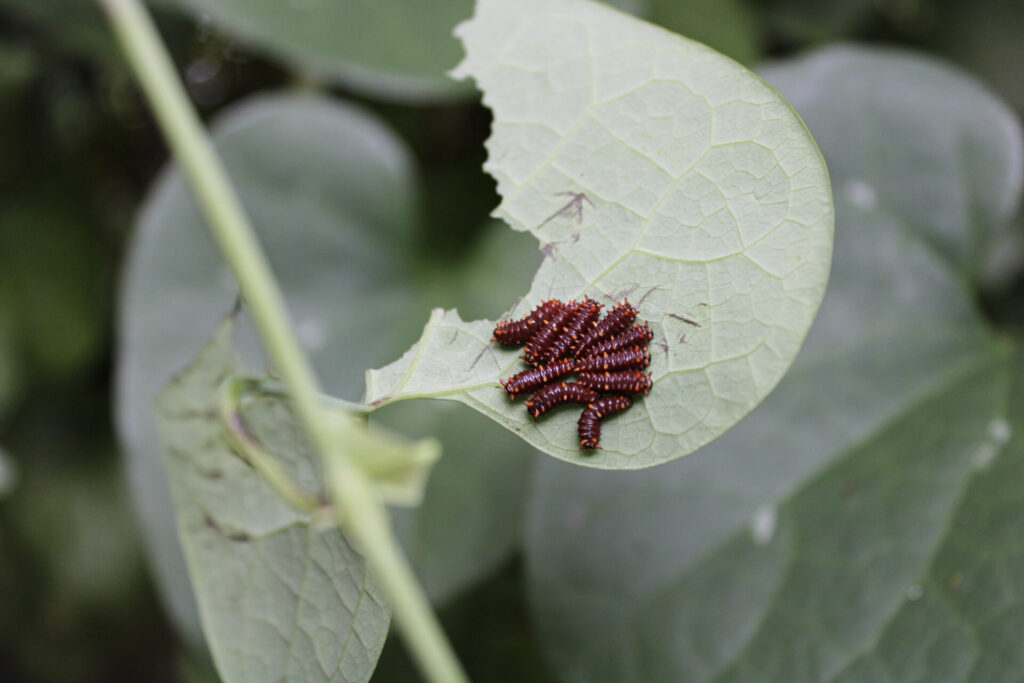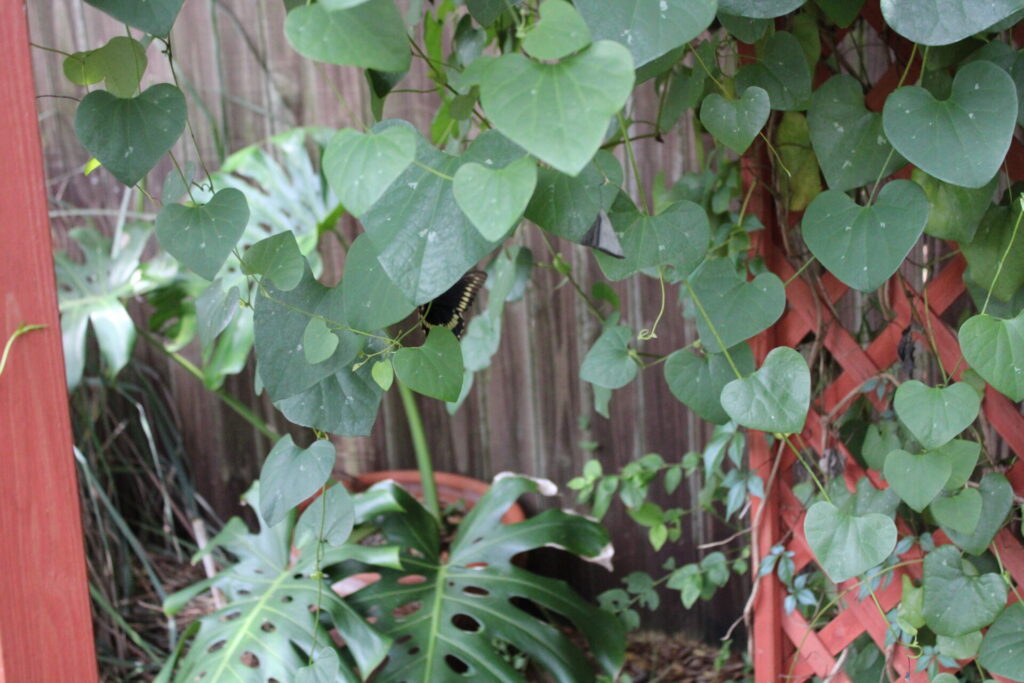Every year in June, I start panicking. Where are they? Where ARE they!? I’ve got dozens of butterflies, moths, and bees, but where are THEY?
And every year, they finally appear. Dozens and dozens of tiny red caterpillars, huddled together in sweet small clusters on the large leaves of my dutchman pipevine. At this point, the pipevine is usually so large that it begins to tilt the wooden arch it is climbing over under the weight of its heavy vines. But that won’t be a problem for long.

The Polydamas swallowtail is the only tailless Swallowtail in the United States, and is easily identified with the yellow band that “rims” its lower wings. It is nicknamed the Goldrim swallowtail, Tailless swallowtail, and simply “Poly” amongst butterfly enthusiasts.
Butterflies lay their eggs in yellow rows on the vines and sometimes new growth of Dutchman pipevines. When the caterpillars emerge, they first eat the remains of their egg sacs for their first meal. They remain contentedly clustered together even while eating, until they become larger and more solitary.
Polys are MESSY eaters and will randomly chomp through leaves, allowing large chunks of the plant to fall to the ground unused. This is another reason why I like to bring them into a mesh enclosure.. I can control which pieces of the vine I want to snip off and give them first. They are easy to rear in a butterfly enclosure, but are voracious eaters, so be sure to keep them stocked with fresh clippings and clean out the frass (caterpillar poop) daily.

These caterpillars get HUGE and I am always shocked by how fat and crazy looking they are. Definitely one of the coolest butterflies to attract to your garden!
**I will come back to this post and update throughout the week as my Polys grow!**

